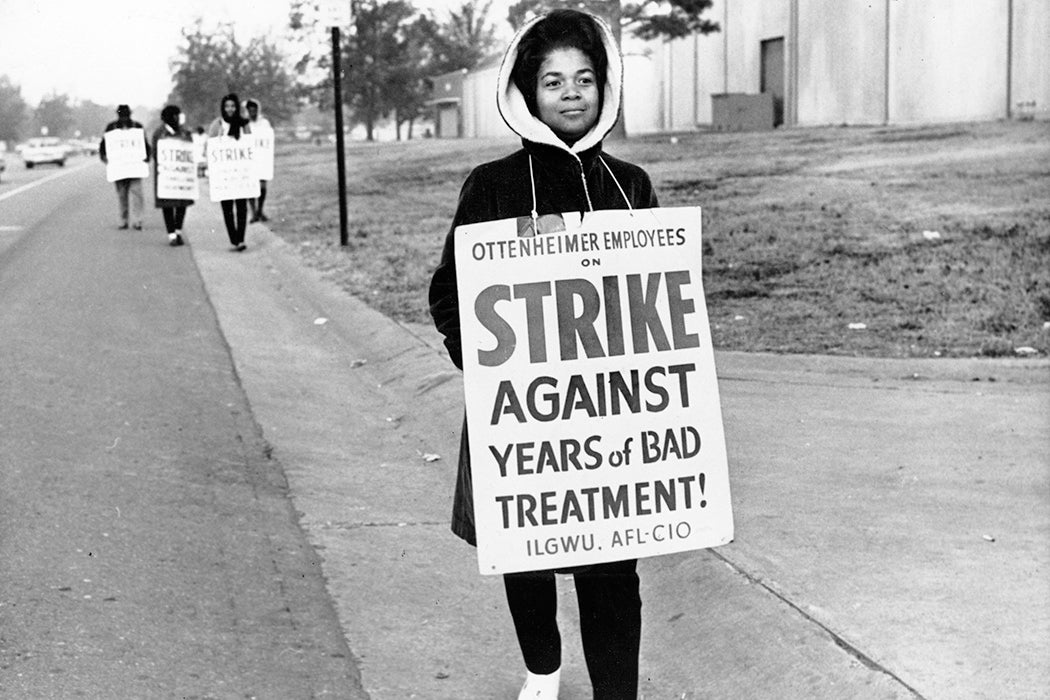For US workers and those who claim to represent them, a perennial question is whether to understand people of other ethnicities and nationalities as allies or rivals. As historian David Struthers writes, that’s something workers in the Southwest struggled with more than 100 years ago.
The xenophobia and racism within the early-twentieth-century labor movement shouldn’t be understated. From the beginning, organizing among white workers in California was closely tied to anti-Chinese agitation and even violence. And many working-class groups, especially the more conservative unions of the American Federation of Labor, gained power for their white, American-born members by excluding others. But, Struthers writes, especially within the more radical and anti-authoritarian side of the labor movement, a commitment to internationalism helped build multi-ethnic campaigns.
For example, in the first decade of the century, the Los Angeles Socialist Party’s white leaders built connections with their counterparts in Mexico. They made common cause with the Partido Liberal Mexican (PLM), which organized opposition to the dictatorship of Porfirio Díaz, celebrating its leadership in a strike at the American-owned Cananea copper mine in Mexico. And immigrant socialists frequently organized across lines of ethnicity and language. At one 1909 gathering organized by Russian socialists, Germans, Hungarians, and Russians performed for an audience that included Mexican and English members.
In 1907, Struthers writes, Los Angeles detectives arrested three PLM leaders. Local socialists joined with anarchists and trade unionists to raise money for their defense, organizing multiracial, multilingual meetings, often featuring entertainment by Mexican musicians.
By the early 1910s, the Industrial Workers of the World (IWW) were bringing their intentionally inclusive style of labor organizing to the Southwest. Mexican workers organized with the union in Los Angeles, Fresno, San Diego, Phoenix, and elsewhere. IWW members and other radicals, including African American, Native American, Italian, and Anglo workers, joined the PLM in the Baja Raids, an unsuccessful opening salvo in the Mexican Revolution.
“The significance of the Baja Raids outstripped their military effectiveness,” Struthers explains. “It lay in their international and interracial character, which remained unmatched until the antifascist organizing during the Spanish Civil War a quarter-century later.”
Weekly Newsletter
In the summer of 1913, hop-pickers in Wheatland, California, went on strike. Press reports indicated that the farm’s workforce included workers of twenty-seven different nationalities, and a strike meeting featured speeches in seven languages. When local law enforcement authorities attacked the workers, resulting in four deaths, leftists across the country took notice and offered support. Another demonstration of internationalism on the ground came that winter, when hundreds of unemployed workers staged public demonstrations in LA. The Los Angeles Times reported that, when arrested and brought to court, members of this movement answered questions “in the broken accents of the Mexican, the German, Italian, Scandinavian, the Russian and the Slav.”
While racism and xenophobia remained alive and well in the labor movement, Struthers suggests that affinity across racial and ethnic lines “reached its fullest potential in the most cosmopolitan spaces least touched by hierarchical organizing efforts by reformist groups on the Left.”








